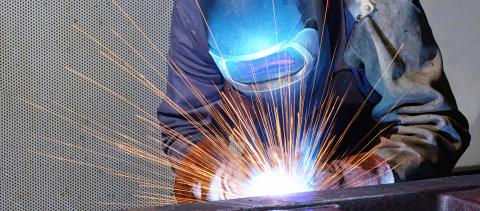Welding
A few words about welding… yes, we know that the worst thing is welding of the gate in your summerhouse However, it is worth to find out what welding is, why it is important to weld, not to torque elements and what are the characteristics of different welding methods.
Welding means joining pieces of material together by heating them and melting their edges with or without binder. It is a type of welding that uses a welding power supply to create an electric arc. This process is called arc welding.
In arc welding it is enought to use heat created by arc which causes melting welded elements in order to join them. It is for example Wolfram inert gas welding (TIG).
However, MIG/MAG (where the wire feeder feeds the filler wire through the welding gun) and welding with coated electrode are also very popular welding methods. It is necessary to use appropriate additional material.
The edges should be prepared for welding, to obtain appropriate welding groove (for example V-shaped). During welding, the arc melts groove’s edges and wedling material. This is how weld pool is created.
The most common materials for welding are metals: aluminium, carbon steel, stainless steel (high alloy). However, it is possible to weld plastics – then the heat source is hot air or electric resistor.
We own welding technologies approved by the UDT-CERT:
- TIG welding (141) of carbon steel (material groups: 1.1, 1.2 according to ISO/TR 15608); thickness between 3 and 12 mm, pipes with diameters >=25 mm
- MAG welding (135) of carbon steel (material groups: 1.1, 1.2 according to ISO/TR 15608; thickness between 3 and 20 mm, pipes with diameters >500 mm
- TIG welding (141) of high alloy steel Cr-Mo-(Ni) with vanadium (material group: 6.1 according to ISO/TR 15608); thickness between 10 and 40 mm, pipes with diameters >=25 mm
- TIG welding (141) of austenitic stainless steel (material group: 8.1 according to ISO/TR 15608); thickness between 3 and 7,2 mm, pipes with diameters >=25 mm
- Welders with UDT authorization



